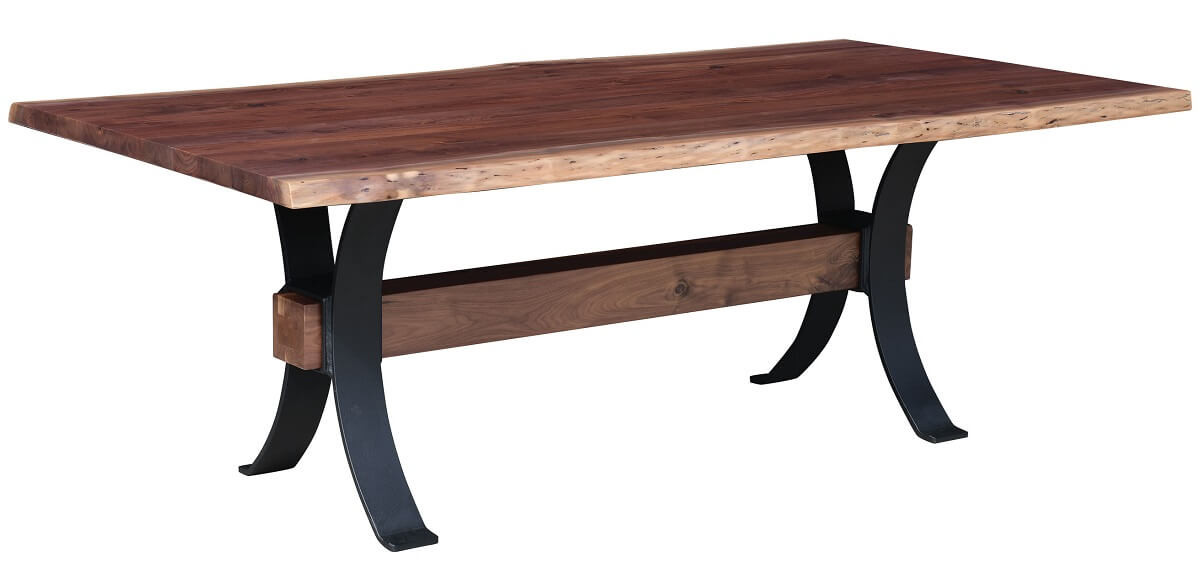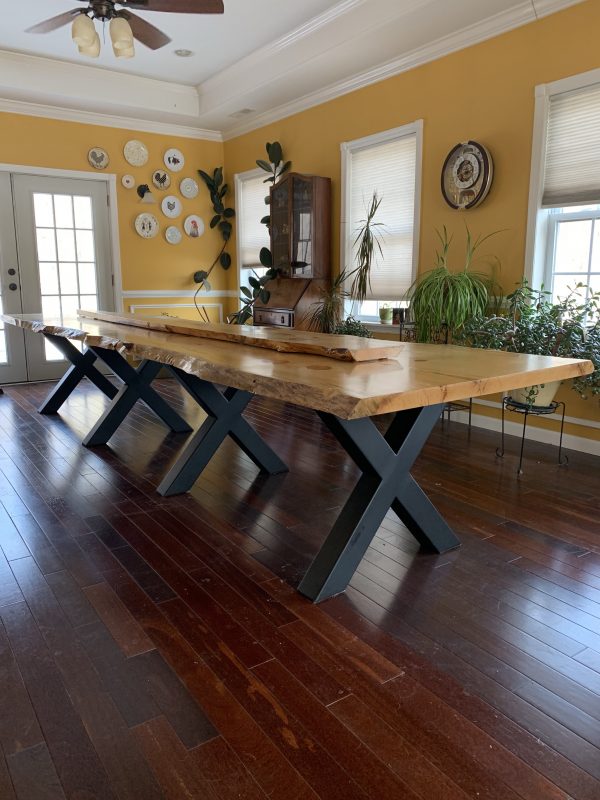Just How to Select the Perfect Dining-room Table Legs for Your Home Decor
Selecting the excellent dining-room table legs is a nuanced procedure that needs mindful factor to consider of different aspects, including your space restrictions, visual choices, and useful demands. The interaction between materials, designs, and dimensions can substantially affect the setting of your eating area, making it important to approach this choice methodically. As you consider the myriad options offered, it ends up being clear that the right option prolongs past plain look; it can enhance your general dining experience. What aspects should you prioritize to guarantee your selection matches your home's special personality?
Assess Your Dining Area
Examining your dining space is vital for selecting the right table legs that match both looks and functionality. Begin by measuring the measurements of your dining location, including ceiling height, floor space, and closeness to other furniture. This details will certainly aid identify the suitable size and elevation of your eating table, which straight influences the option of table legs.
Next, think about the design and format of your dining room. As an example, an open-concept style may gain from table legs that use visual agility, such as slim steel or acrylic choices. Alternatively, a much more typical setting might require tough wooden legs that provide a sense of permanence.
Assess the existing color palette and materials in your eating location. Balancing the table legs with these aspects produces a cohesive look that enhances the total style.
Ultimately, an extensive evaluation of your dining space will certainly assist you in making a notified decision, guaranteeing that your table legs not only boost the aesthetic appeal but additionally offer functional functions.
Consider Your Style Preferences
When picking dining-room table legs, it is crucial to assess your individual style choices, as they considerably affect the general visual of your dining space. Your choice of table legs can either enhance or contrast with existing design, making it critical to align them with your favored interior layout theme.
If your home leans in the direction of a contemporary aesthetic, consider sleek metal or minimal wooden legs that provide a tidy, uncluttered appearance. For a more traditional strategy, elaborate wooden legs with elaborate makings can add a touch of style and class. Industrial styles take advantage of durable, raw materials such as recovered wood and steel mixes, mirroring a tough beauty.
In addition, farmhouse and rustic designs commonly prefer strong, chunky legs that evoke a feeling of warmth and convenience. Alternatively, if your decor is eclectic, you may pick unique shapes or a mix of products to develop visual passion.

Evaluate Material Options
The choice of product for eating area table legs plays a critical function in both longevity and visual appeal. Common materials consist of timber, steel, and composite alternatives, each offering distinctive characteristics that can influence the overall look and long life of your table.
Timber is a timeless selection, recognized for its heat and convenience. Woods like oak and walnut provide extraordinary stamina and can be completed in different spots to match any type of design. Nevertheless, softwoods like want are much more susceptible to damages and scrapes, making them much less excellent for high-traffic locations.
Metal legs, frequently crafted from steel or light weight aluminum, show modernity and moved here commercial appeal. They are immune and extremely durable to put on, making them appropriate for households with children or constant celebrations (dining room table legs). Furthermore, steel can be finished in numerous colors, enhancing the customization opportunities
Composite materials, such as MDF or laminate, offer cost and diverse designs. While typically much less resilient than strong timber or metal, they can still supply an elegant appearance and are often very easy to maintain.
Inevitably, the material you choose ought to line up with your lifestyle, visual preferences, and the degree of use your eating table will certainly experience.
Determine Elevation and Size
Picking the suitable elevation and size for your eating room table is important for both functionality and convenience. The basic elevation for dining tables normally ranges from 28 to 30 inches, enabling ample legroom for most people when seated. It is vital to take into consideration the dimensions of your dining room and the kinds of chairs you intend to use.

In addition, take into consideration the proportions of your dining-room. A larger table in a large location can develop a grand setting, while a smaller sized table functions well in even more intimate setups. Ultimately, the right height and size will certainly harmonize with your total style and enhance the dining experience for you and your visitors.
Explore Modification Opportunities

In addition, the style of the legs can be customized to fit numerous styles, such as rustic, modern, or commercial. For instance, conical legs can evoke a mid-century modern feeling, while chunky, block-style legs might resonate with traditional or farmhouse style.
Property owners can also discover color surfaces, from natural timber stains to repaint, allowing them to click now match or contrast with the table top and bordering style.
Moreover, leg elevation can be adapted to fit specific seating plans or individual preferences, improving both comfort and performance.
Lastly, special decorations, such as carvings or ornamental braces, can even more individualize the table legs, making the dining experience not simply a meal however a declaration item in the home. By considering these modification alternatives, property owners can develop a dining room table that genuinely mirrors their individuality.
Final Thought
Picking the ideal dining area table legs calls for cautious click here to read consideration of numerous aspects, consisting of the measurements of the eating area, design preferences, material toughness, and wanted height. Customization choices additionally improve the ability to accomplish a natural visual that enhances the total decor. By systematically assessing these aspects, house owners can ensure that the chosen table legs not only satisfy practical demands however likewise contribute positively to the dining experience and atmosphere of the home.
Choosing the suitable eating space table legs is a nuanced process that needs cautious consideration of various elements, including your room constraints, visual choices, and sensible requirements.Examining your dining space is essential for selecting the right table legs that complement both looks and capability.When establishing dimension, determine the area where the table will certainly be positioned to ensure it fits conveniently, allowing for at least 36 inches of clearance around the table for easy activity. A bigger table in a roomy area can develop a grand atmosphere, while a smaller table functions well in even more intimate settings.Selecting the optimal eating space table legs requires mindful consideration of various variables, including the measurements of the dining room, design preferences, product toughness, and desired elevation.